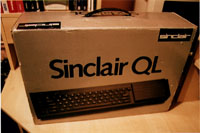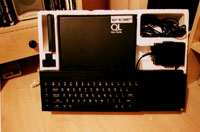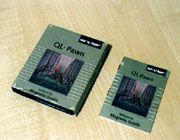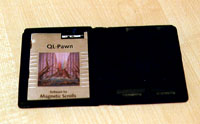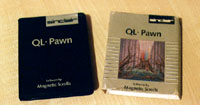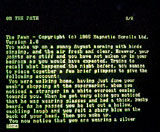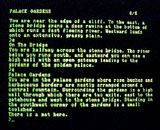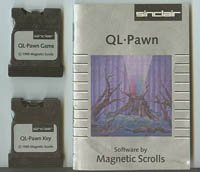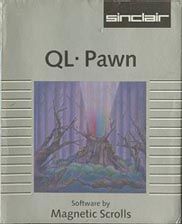QL-Pawn
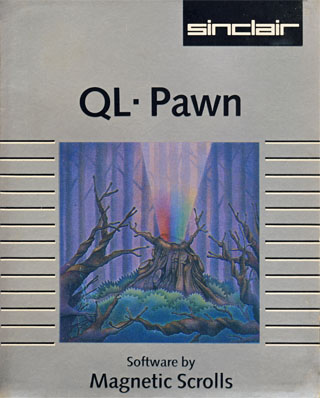
Excercise your imagination with an adventure set in a magical kingdom. Your first challenge is to discover the goal of the game. Then you must
find the best way to achieve it, using the items you find on your travels, and by conversing with the other characters.
QL-Pawn features a
command interpreter which allows a very free use of English language instructions - it understands a wide range of words and accepts complex
grammatical constructions.
- Wallet with booklet, Sinclair warranty paper and four microdrives: One with the game itself, one for the copy protection and two spares for making a backup of the game. Size: 9.6 cm x 12 cm - 3.3/4" x 5.11/16"
- Booklet
- Sinclair warranty
Dive into history and take a look at QL-Pawn! The live demo requires Javascript and runs on Firefox, Chrome, and Safari browsers (IE is too slow). Please be patient. The demo runs QL-Pawn in the QLay emulator which runs in em-dosbox, a Javascript port of the famous DOSBox emulator. And it is faster than the original QL. While the demo is running you can even use load and save to store your game progress. The save games are lost when the demo is closed. Note:If the emulation does not respond to the F1/F2 key press on start, you need to focus the window. Click somewhere into the inner frame close to the border.
The QL-Pawn
as it was then called was available for sale in 1985 when both Magnetic
Scrolls and the ill fated QL were in their infancy. The QL-Pawn came on
two microdrives that were enclosed within a microdrive wallet that was
badged by Sinclair Research. A sleeve was also produced for the wallet
along with an instruction booklet containing a short narrative to introduce
the adventure.
The game was text only but it used a powerful parser that would be used later on
other formats such as the Atari ST. Sinclair Research was at the time
encouraging software companies to enter into a number of different contractual
options of which some involved the packaging and distribution of software
titles for sale under the Sinclair badge. This was an attempt by Sinclair
Research to stimulate software design and growth for their new QL. Sinclair
Research Ltd was in a dilemma as they wanted to promote their QL as a
professional business machine and they did not want to associate the QL
as a games machine as what had happened with its earlier machine the Sinclair
Spectrum. The problem the QL faced was that business would not support
it as it had many non industry standard features and the home users would
not buy a QL because it lacked the entertainment software base. Magnetic
Scrolls was one such company that allowed their product QL-Pawn to fall
under the Sinclair Badge. However Sinclair Research did such a bad job
with the product that in the end more copies of The Pawn were sold on
the Sinclair Spectrum than there were ever made on the Sinclair QL. Unfortunately
the bitter experience for Magnetic Scrolls meant that the sequel The Guild
of Thieves would never see the light of day on the Sinclair QL (even though
mention of the sequel was made in the Basic loader for the QL-Pawn).
Pictures
and text were donated by Gareth Williams.
The Quantum
Leap (or QL for short) was launched by Sinclair Research Ltd in 1984 a
Cambridge, England based company which was owned by Sir Clive Sinclair.
The QL boasted of technological advancement over its competitors.
The specs for the machine seemed impressive at the time:
128K RAM
48K ROM
Two Microdrives (fast storage devices using a continuous tape loop)
68008 Motorola CPU
8049 second processor (to handle keyboard and generate sound)
QDOS (single user, multitasking window o/s)
Sinclair SuperBASIC
4 Business application software titles from Psion (word processor, spreadsheet,
database and graphics)
Various interfaces (including 2 RS232 ports)
8 colour graphics at 256 x 256 pixels
4 colour graphics at 512 x 256 pixels
Yet despite the companies brave attempt with the then new 68000 series
of processors from Motorola the QL failed to make a niche in the market.


